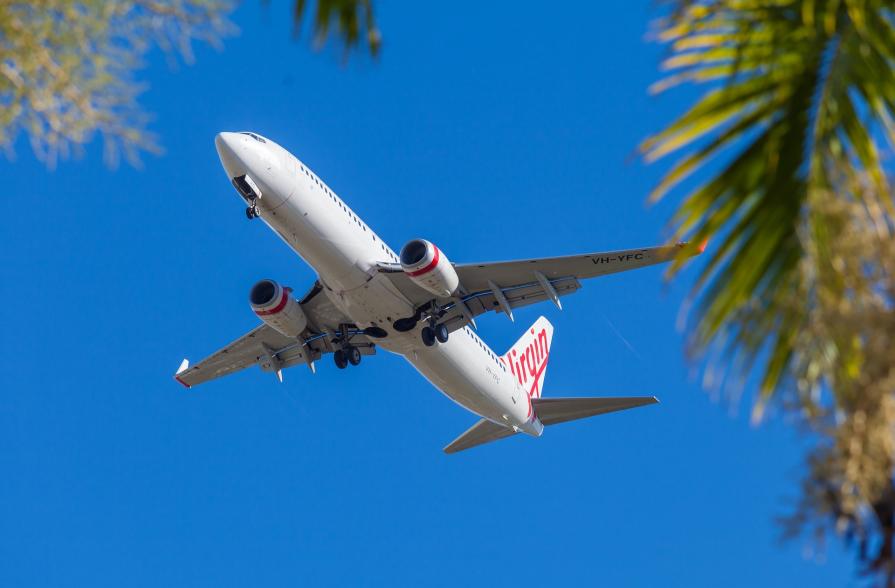When we do not understand something, we begin to think it over, surrounding ourselves with a veil of secrets, and myths. It is from ignorance that conspiracy theories and other dubious stories are born. One of these spheres, surrounded by a variety of myths of diverse degrees of reliability and persuasiveness, is air travel. Below we will consider a few popular myths and, we will try to dispel them.

The aircraft flies exclusively on autopilot

The autopilot is responsible for performing a significant part of the work during flight. It maintain the course, altitude and speed, also it can execute some maneuvers, including turns and even landing. However, planes do not fly completely autonomously without the participation of pilots. Even in autopilot mode, pilots are always ready to intervene in the control of the aircraft in case of unusual situations, failures in the autopilot or requirements of manual control. Pilots constantly monitor the operation of all aircraft systems, communicate with dispatchers and make decisions, which the autopilot is not able to make - for example, when weather conditions change, air traffic density or other factors.
You can open the airplane door in mid-air

It is almost impossible to open the door of an airplane in the air. At the altitude where commercial aircraft fly (between 9,000 and 12,000 meters), pressure close to sea level is maintained inside, providing normal breathe of all passengers. Outside, the pressure is much lower, so this difference creates a huge force which presses the door against the fuselage of the aircraft.
In addition, the doors of modern aircraft are designed in such a way that they cannot be opened in flight: they are either "jammed" by pressure or open inward before moving outward, making them even more impossible to open at a pressure difference. In addition, they are equipped with locking systems, guaranteeing prevention of being opened during flight, and the systems are automatically activated when the aircraft is at altitude.
If you do not turn off your mobile phone, the plane will crash

Modern aircraft are equipped with sophisticated and reliable navigation and control systems that are protected from most external interference, including signals from mobile devices. But there are still reasons to turn off your cell phone or switch it to airplane mode: there is a small chance that working mobile devices can interfere with the aircraft's navigation and communication systems. In particular, this applies to old models of aircraft and equipment.
Planes drop sewage in flight

No! Modern aircraft are equipped with sealed waste storage systems that prevent the contents of the toilets from being thrown outside during the flight. All waste from the aircraft toilets is collected in special sealed tanks, which are securely closed and do not have a direct exit to the outside. After landing, the bins are emptied using special equipment at the airport, and the waste is safely disposed of or treated.
Where did this myth come from then? There is a simple explanation for this. The myth of in-flight sewage being dumped may have arisen from the rare occurrence of leaks of blue chemical liquids used in airplane lavatories that froze and fell to the ground. However, such cases are extremely rare and usually involve malfunctions rather than deliberate dumping of waste.
When flushing the toilet bowl on the plane, it can suck in the passenger
No, calm down, the toilet on the plane cannot suck in the passenger when flushing! When you press the flush button, the vacuum pump pulls the contents of the toilet into the sealed tank. This process is powerful enough to deal with the waste, but still not so strong as to pose a danger to the passenger.
In addition, the toilet in an airplane is designed to minimize contact with the surface: when you sit on the toilet, the contact with it is not tight, which does not allow you to create an airtight seal that could create a threat of suction.
Oxygen masks are needed to induce euphoria
No. If a sudden depressurization of an aircraft is occured (for instance, with significant damage to the fuselage), oxygen levels at high altitude will become too low for normal breathing, which can result in hypoxia. It is a condition in which the brain and other organs do not receive enough oxygen, causing loss of consciousness or serious medical problems. Hypoxia can cause a short-term feeling of euphoria due to a lack of oxygen in the brain, but it is an extremely dangerous condition. Oxygen masks are designed specifically to prevent hypoxia, not to induce it.
On the plane, you get drunk faster

This is just the truth: on an airplane, a feelling of intoxication can be achieved faster than on the ground. Such situation is stipulated by the fact that the air pressure on board is maintained equivalent to an altitude of about 1800-2400 meters above sea level, reducing the level of oxygen in the blood. This decrease in oxygen levels may contribute to the effect of alcohol on the body. In addition to it, the air is dry, leading to dehydration, and, as a result, enhancing the effect of alcohols.
One small hole in the body and the plane will be torn apart
This is not entirely true. In case of a small hole in the airframe, some problems may arise. However, it won't lead to the instant collapse of airframe, as during constructing of airplanes such a factor as ensuring maintenance of tightness and pressure inside the cockpit at altitude, in a thin atmosphere is taken into account. If a small hole forms in the body of the aircraft, it can lead to air leakage and a decrease in cabin pressure. However, the aircraft are equipped with pressure control systems, allowing to compensate for small leaks and maintain a safe cabin pressure.
Serious consequences, such as instant decompression, can only occur when the enclosure is severely damaged, such as due to an explosion or major structural damage. But even in such cases, the crew is trained to act quickly and efficiently to ensure the safety of passengers.
Due to air recirculation, germs spread in airplanes

Air recirculation in airplanes can lead to the spread of microbes, but it is not as dangerous as it may seem at first glance. Modern aircraft are equipped with complicated ventilation and air filtration systems, allowing to significantly reduce the risk of infection transmission. In modern aircraft, about 50% of the air inside the cockpit is recirculated, and the remaining 50% comes from the outside, after passing through the engines. The recirculated air passes through high-efficiency air filters (HEPA filters) which remove up to 99.97% of particles, including bacteria and viruses.
The air in the cabin of the aircraft moves vertically - from top to bottom. This means that air is supplied from above and goes down, reducing the horizontal spread of particles between passengers.
However, recirculated air can lead to the spread of microbes, the risk of infection on an airplane depends largely on the close proximity to an infected person, rather than on the ventilation system. For instance, in case of sneezing or coughing near you, the risk of infection will be higher as a result of close contact rather than air recirculation.










